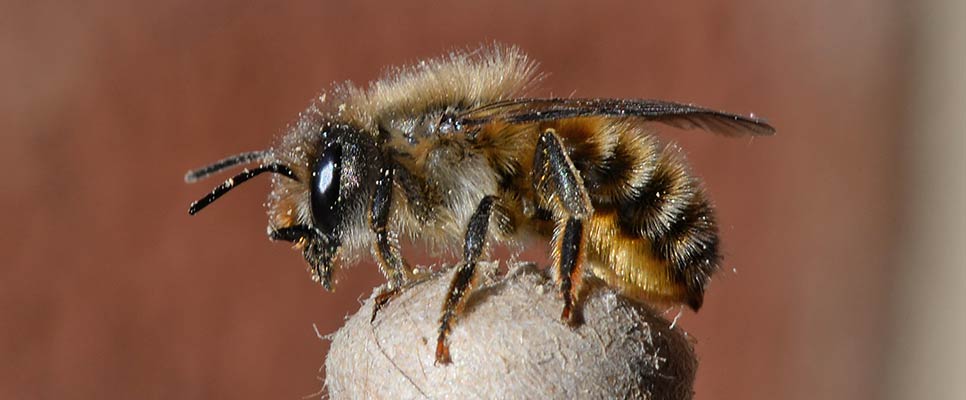Description:
Mortar bees, also known as Masonry Bees, are sizable, yellow, and light brown bees that are frequently found on their own rather than in a nest. They enjoy digging in cracks and holes in the sand, rock faces, hard soil, and brick foundations, hence the name Mortar Bee.
It is not known that they sting people. Mortar bees, sometimes known as masonry bees, are so named because they occasionally nest in the mortar joints of brick buildings or use wall cracks. The most prevalent kind of bee, known scientifically as Osmia Rufa, is one of several different bee species that perform this function.

Appearance:
- The thorax of a mature A. cingulata measures 10–12 mm in length and is reddish-brown and hairy.
- Stripes on the abdomen are glossy blue and black.
- Women have four stripes, while men have five.
- Numerous Australian Amegilla life forms are almost identical to A. cingulata in appearance.
Life cycle and habits of the Australian Mortar Bee:
Lifecycle:
- Females create a single nest in a burrow, where they lay an egg at the end of the tunnel with a nectar and pollen combination for the larva to eat.
- Adults perish during the cold season.
- Bee larvae remain in the shelter until spring.
Habits:
A solitary bee, but several can nest close to one another Nest in soft stone walls, cliffs, dried river banks, soft mortar in structures, and earth banks beneath houses.
- At night, males “roost” on plant stems, while females stay in the burrows.
- Found all over Australia, except for Tasmania, and in tropical nations that are close to India.
- Although not hostile, if handled roughly, it may sting.
- Are effective pollinators from some crop production and wildflowers.
- Buzz pollination involves grabbing the flower and vibrating it quickly with the wings.
- A small foraging range of about 300 metres
Published on: November 14, 2023
Last updated on: December 14, 2023
